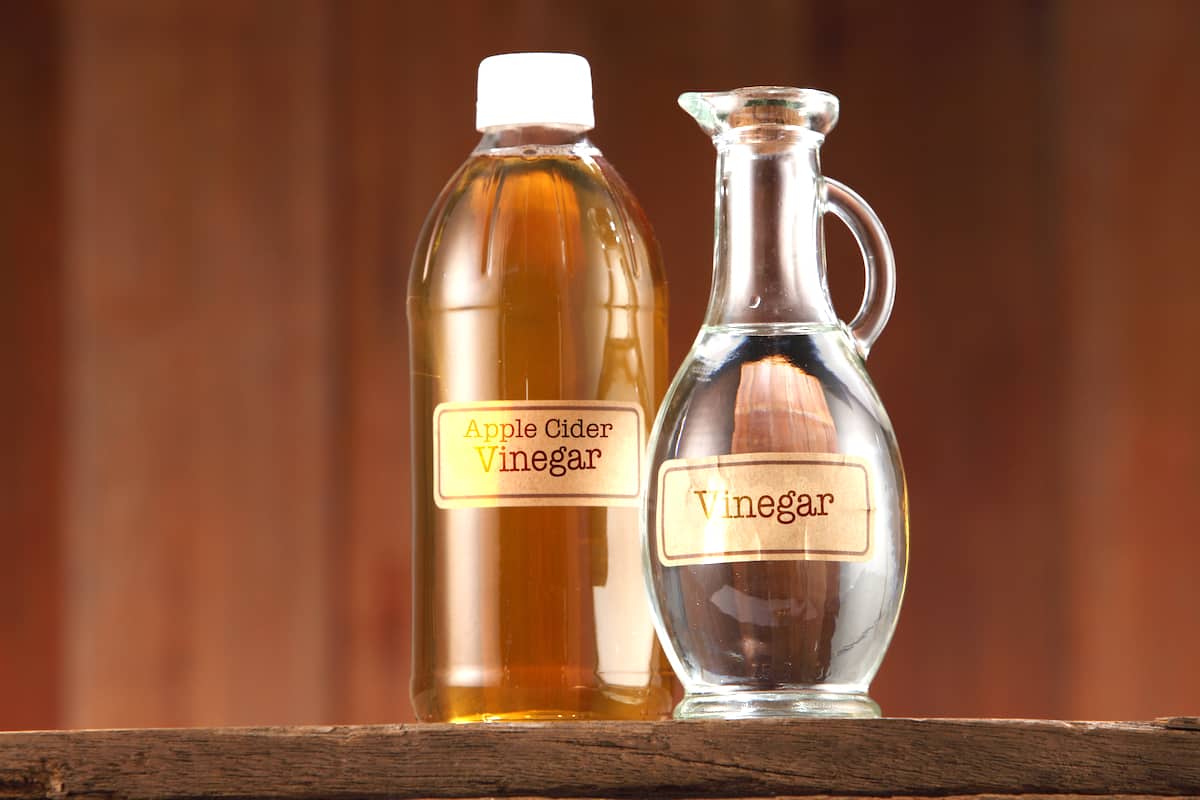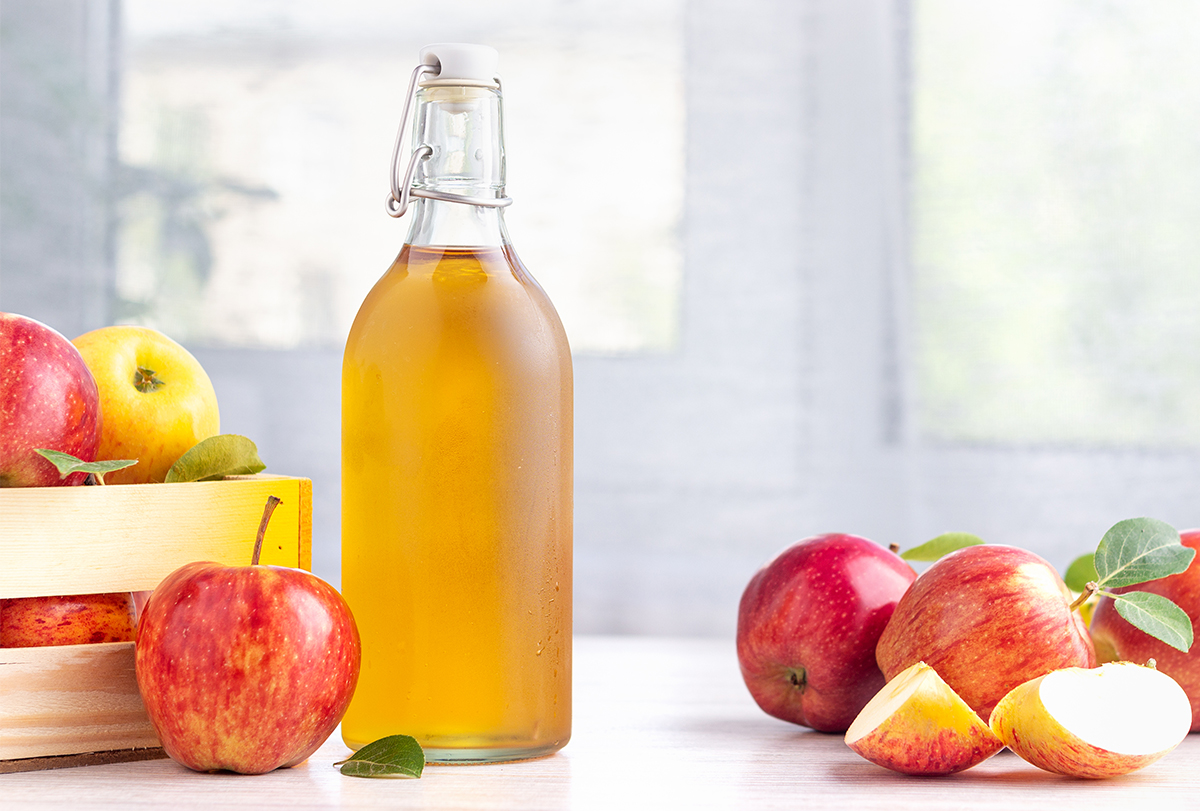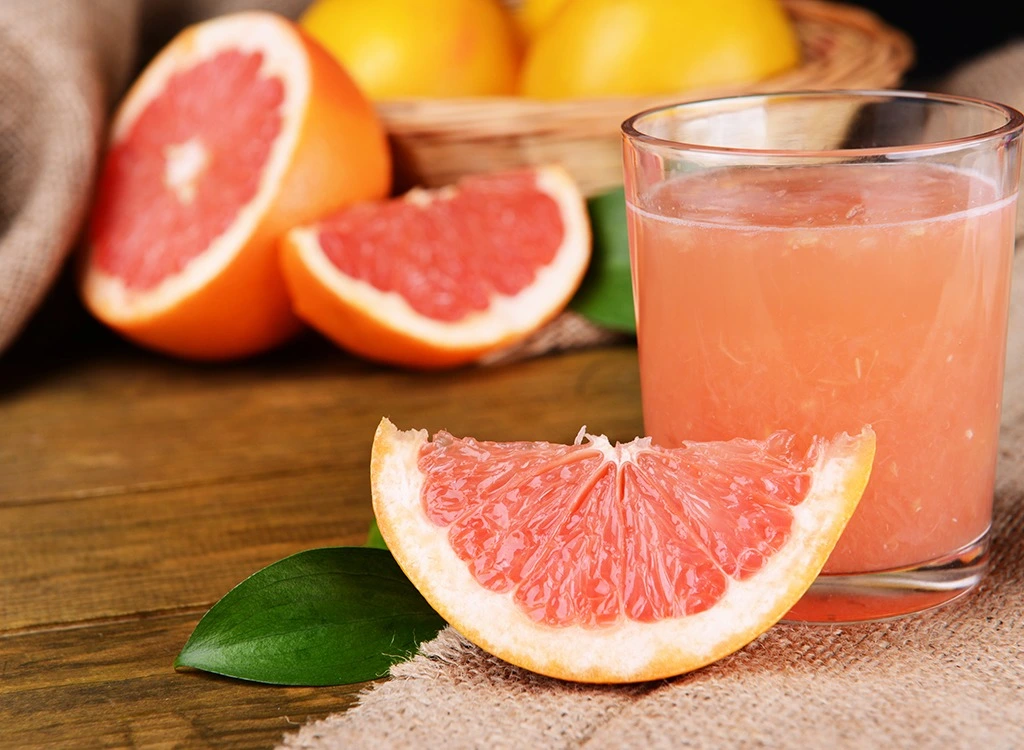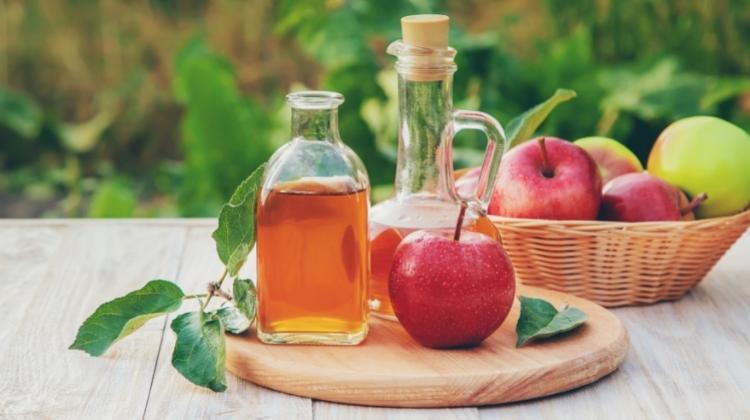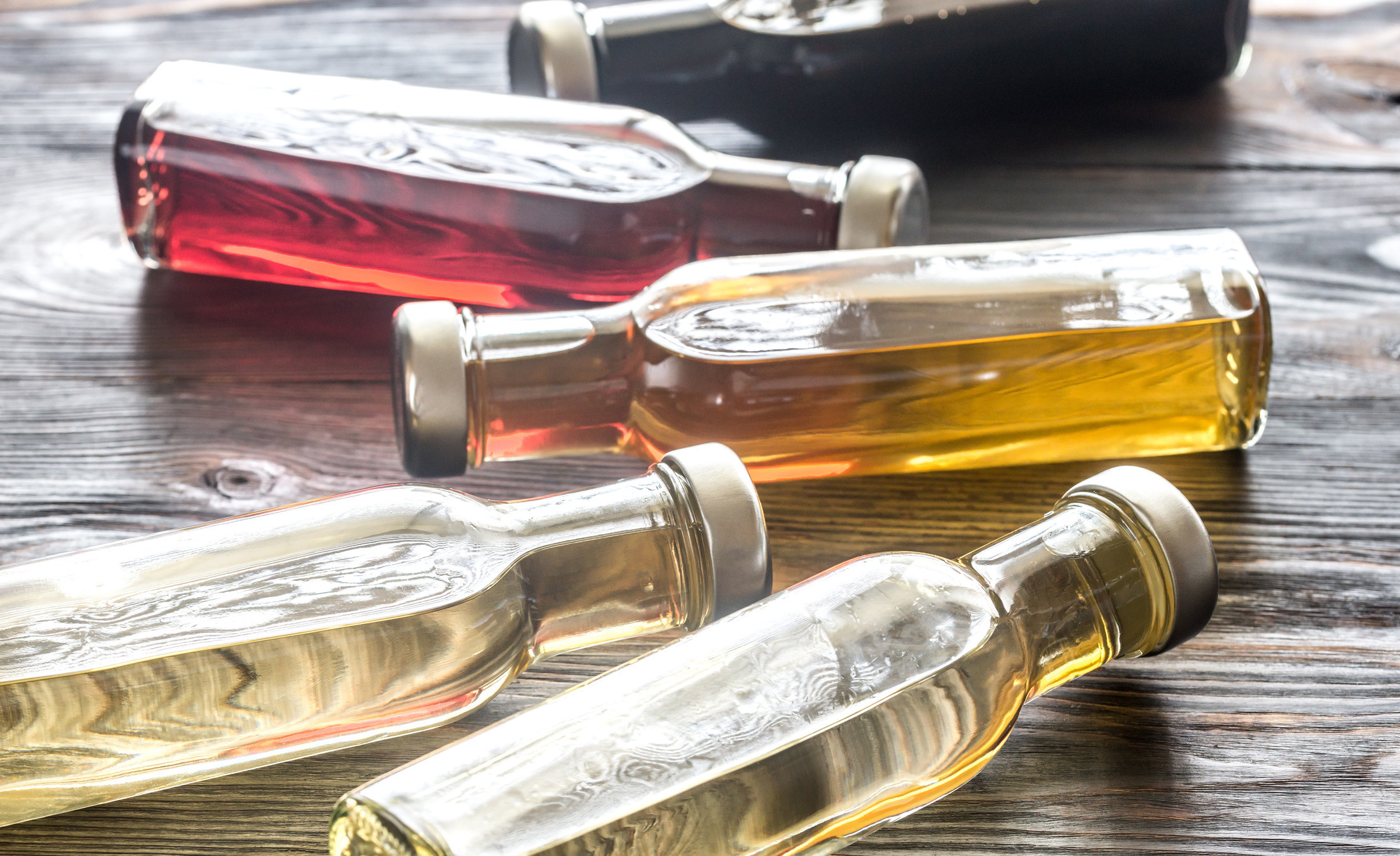
All About White Vinegar Versus Apple Cider Vinegar
Apple cider and white vinegar, with their characteristic sour and sharp flavor, may be found in the kitchens of people all over the world. Vinegar enhances food flavor in various ways, including salad dressing, chicken soup, or even roasting vegetables. It does this by contributing a distinct sourness and sweetness to the dish, which in turn helps to balance out the other flavors.
Apple cider and white vinegar are the two most common forms of vinegar found in homes around the country. And flavor and appearance aren't the only things that set them apart from one another in any way. Continue reading to find out the reason why.
What sets white vinegar apart from apple cider vinegar and other types of vinegar?
The acetic acid content in white vinegar ranges from 5 to 10 percent, making it the most potent type of vinegar. It has a clean, extremely acidic flavor, and its color is transparent. The acetic acid content of apple cider vinegar ranges from 4% to 6%. It has the appearance of a light brown coffee and the flavor of fermented apples that is both sweet and sour.
It may be why apple cider vinegar is most commonly used for dressing salads, marinating meats, and preparing sauces. On the other hand, white vinegar is the vinegar of choice for "simpler" cooking tasks such as dying Easter eggs, picking food, and even cleaning windows or removing stains from clothes. Apple cider vinegar is used for dressing salads, marinating meats, and preparing sauces.
Where Vinegar Gets Its Start In The World
Vinegar is the result of the biological process of fermentation, which is also responsible for the carbonation of beer and the leavening of dough made at home.
Microorganisms, such as yeast and other bacteria, derive energy from the sugars and starches found in food. As a byproduct of this feeding behavior, the micro-organisms create either alcohol or acid. This acid serves as a natural preservative for the vinegar and is also responsible for giving the vinegar its zesty and sour flavor. Using fermentation to produce most alcoholic beverages, including beer, cider, wine, vodka, and whiskey.
The word "vinegar" originates from the Old French phrase "vin aigre," which translates to "sour wine." If you leave a bottle of wine with about a quarter of its contents open for two weeks, the wine will convert into wine vinegar.
Your wine will become infested with acetobacter bacteria, which can be found almost anywhere (in the air, on fruit, even inside grape presses), and these bacteria will begin to feed on the alcohol that is present in your wine, which will result in the production of acetic acid. Vinegar is more acidic and more potent in proportion to the amount of acetic acid it contains compared to the amount of water.
According to historians, there is evidence that individuals were making vinegar as far back as 4,000 years ago. Vinegar was originally produced domestically by ancient Babylonians about the year 3,000 B.C.; these people were the first to leave a written record of the practice. They made it by fermenting figs and dates, using them as a condiment in cooking and natural medicine. They manufactured it by fermenting figs and dates.
Apple Cider Vinegar
The apples that go into making apple cider vinegar are left to ferment.
Apple cider vinegar is popular among consumers concerned about their health and home cooks because of its sweet and sour flavor. Everything you need to know about it is included in this article.
The Process Behind It
Apples, sugar, and yeast are the three primary ingredients in the production of apple cider vinegar. After being crushed, the apples are added to a mixture containing yeast and sugar, which begins the fermentation process. After that, Two stages of fermentation occur with apple cider vinegar: alcoholic fermentation and acidic fermentation.
The first step in the process is the fermentation of alcohol; yeast bacteria consume the smashed apples and the sugar already present in the apples (in the form of carbs), which results in the fermentation of alcohol.
After that comes the process of fermentation in an acidic environment. The alcohol is fermented into vinegar by bacteria called acetobacter, which can be found pretty much everywhere. These bacteria invade the liquid and feed on the leftover sugars in the alcohol to produce vinegar.
Sugar is obviously a treat that bacteria like yeast and acetobacter enjoy just as much as people like you and I do, if not more.
How To Put Apple Cider Vinegar To Use In Your Life
You may use apple cider vinegar to add a kick to sauces, soups, and stews, as well as to season grilled vegetables and meats, dress salads, and season grilled vegetables and meats. Some individuals put one to two teaspoons of apple cider vinegar in their morning smoothie, while others construct an apple cider vinegar tonic by diluting it with water and drinking it.
Vinegar has been employed as a therapeutic agent by humankind for untold generations. In particular, it has been suggested that apple cider vinegar has a variety of positive effects on one's health. It is important to note that a good number of them should be regarded with a grain of salt because the study does not necessarily support them.
I can tell you without a doubt that apple cider vinegar is an excellent condiment that you should use in the food that you prepare on a regular basis.
Purchasing Guide Of Apple Cider Vinegar
The "mother of vinegar" is an important byproduct created during the fermentation process of making apple cider vinegar. This material resembles a membrane and comprises strands of protein, enzymes, and microorganisms that are considered beneficial to the body. It can be put to use in the production of fresh batches of vinegar.
The following is an illustration of the mother of vinegar:
Before bottling their apple cider vinegar, many companies remove the mother by filtering it away. It helps make the vinegar appear more appetizing to the majority of consumers. It results in the loss of part of the apple cider vinegar's health advantages, derived from the enzymes and bacteria present in the mother.
If you can purchase raw, unfiltered, and unpasteurized apple cider vinegar when shopping for apple cider vinegar for your home, you should always go with that option. Ensure you always receive the most natural product possible, which has not undergone any further processing.
The Bragg Organic Raw Apple Cider Vinegar is my absolute favorite of all the apple cider kinds of vinegar (on Amazon). Bragg is an American company that has been producing apple cider vinegar for over a century. The company was established in 1912 by Paul Bragg, an American alternative health food advocate who later passed away. Their vinegar has an acidity level of 5% and is raw, unfiltered, and unpasteurized simultaneously. Apples grown using organic methods are used in the production of this product, and each bottle contains a small amount of the vinegar's mother.
White Vinegar
White vinegar often referred to as "distilled white vinegar" and "spirit vinegar," is a common ingredient in most American houses.
The Process Behind It
White vinegar has the highest acidity level and is the most aggressive type of vinegar. It has a transparent appearance, and its concentration of acetic acid ranges from 5% for use in pickling and cooking to 10% for cleaning windows and removing stains from clothing, depending on the task at hand.
Fermentation is another natural process that is utilized in the production of white vinegar. In the past, humans manufactured white vinegar out of sugar beets, potatoes, molasses, whey, and any other kind of sweet or starchy fruit or vegetable that was easily accessible to them in their region of the world.
These days, grain is the primary component in producing white vinegar. Grain is combined with yeast and sugar, which starts the fermentation process that produces alcohol, resulting in the production of ethanol, also known as grain alcohol (which vodka is made of).
Because ethanol does not naturally contain many nutrients, its manufacturers must supplement it with yeast or phosphates to initiate the acidic fermentation process. Grain alcohol is converted into white vinegar when acetobacter colonizes the liquid, consumes the sugars contained inside, then colonizes again. Depending on the need, the concentrated white vinegar is diluted to a concentration that can range anywhere from 5% to 10% vinegar to 95% to 90% water.
How And When To Make Use Of White Vinegar
In your own home kitchen, you can make a marinade for meat with white vinegar, and you can prepare brine for pickles using white vinegar.
A cleaning solution that you produce yourself can also be made with white vinegar. Your floor is cleaned with a solution that consists of a half cup of white vinegar and a half gallon of warm water. Reconstitute the solution, and replace it with fresh water if the water becomes contaminated.
Purchasing Advice For White Vinegar
Finding a good source of white vinegar shouldn't be too difficult; and look for white vinegar that has been distilled and has 5% acidity. As a general rule, any grain-based vinegar that is white in color and is prepared with distilled water and water will do. The Heinz Distilled White Vinegar is undoubtedly my top pick in this category (at Amazon).
In Conclusive Term
White vinegar and apple cider vinegar are the results of the natural fermentation process. Sugars and starches found in food are the primary sources of nutrition for microorganisms like yeast and other bacteria. They do this through a process known as alcoholic fermentation, which produces alcohol as well as acetic acid (during acidic fermentation).
Vinegar is mostly composed of fruit that has been subjected to two different types of fermentation. At first, it must go through the process of alcoholic fermentation, during which yeast and other microbes help it to transform into alcohol. After that, it undergoes an acidic fermentation process, during which acetobacter bacteria devour the lingering carbohydrates in order to produce vinegar. The vinegar is diluted to less than 10% for usage in the house and packaged in bottles for sale.
The apples that are used to make the greatest apple cider vinegar have been produced organically. It is offered with "the mother of vinegar," even though it is raw, unfiltered, and unpasteurized. When you buy apple cider vinegar in this manner, you obtain the enzymes and bacteria that are considered to be "healthy" for your health.
The fermentation of grain results in the production of white vinegar. Even though I mentioned some of my favorites, it is ultimately up to your preferences and kitchen. Find the brand and type of white vinegar that best appeals to your taste.

